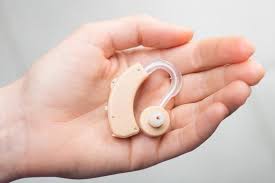Hearing aids, small electronic devices that amplify sound, have transformed the lives of millions of individuals with خرید سمعک loss. Over the decades, technological advancements have revolutionized these devices, making them more effective, discreet, and user-friendly. This article explores the history, technological innovations, and societal impacts of hearing aids, highlighting their critical role in enhancing quality of life for those with hearing impairments.
A Brief History of Hearing Aids
The journey of hearing aids dates back to the 17th century when simple ear trumpets were used to funnel sound into the ear. These rudimentary devices provided basic amplification but were bulky and ineffective in noisy environments. The late 19th and early 20th centuries saw the advent of electronic hearing aids. The first electric hearing aids emerged after the invention of the telephone by Alexander Graham Bell, leveraging the same principles of sound amplification.
The 1920s marked a significant milestone with the introduction of vacuum-tube hearing aids, which offered better amplification but were still cumbersome. The post-World War II era saw the development of transistor technology, leading to smaller, more portable devices. By the 1980s, digital hearing aids began to surface, offering more precise sound processing and customization.
Technological Advancements in Hearing Aids
Modern hearing aids are marvels of miniaturization and technology. Key advancements include:
- Digital Signal Processing (DSP): Digital hearing aids use DSP to convert sound into digital signals, allowing for sophisticated manipulation of sound. This technology enables features like noise reduction, feedback cancellation, and directional microphones, which significantly improve sound quality and user experience.
- Wireless Connectivity: Many hearing aids now offer Bluetooth connectivity, allowing users to stream audio directly from smartphones, televisions, and other devices. This integration enhances the usability of hearing aids in daily life, making them multifunctional tools.
- Rechargeable Batteries: The shift from disposable to rechargeable batteries has been a game-changer, providing convenience and reducing the environmental impact.
- Artificial Intelligence (AI) and Machine Learning: AI-powered hearing aids can learn and adapt to the user’s listening preferences and environments, offering a more personalized hearing experience. These devices can automatically adjust settings based on the sound environment, improving performance in various listening situations.
- Miniaturization and Aesthetics: Today’s hearing aids are smaller and more discreet than ever, often virtually invisible. Innovations in design have also led to more comfortable and aesthetically pleasing options, encouraging more individuals to seek assistance.
The Impact of Hearing Aids on Society
Hearing aids have a profound impact on individuals and society as a whole. For individuals, they offer a renewed sense of hearing, enabling better communication, social interaction, and overall quality of life. Improved hearing can lead to better mental health, reducing the risks of depression and cognitive decline associated with untreated hearing loss.
From a societal perspective, hearing aids contribute to greater inclusivity and productivity. They enable individuals with hearing loss to participate fully in educational and professional settings, breaking down barriers to communication. This inclusivity fosters a more diverse and capable workforce, benefiting economies and communities.
